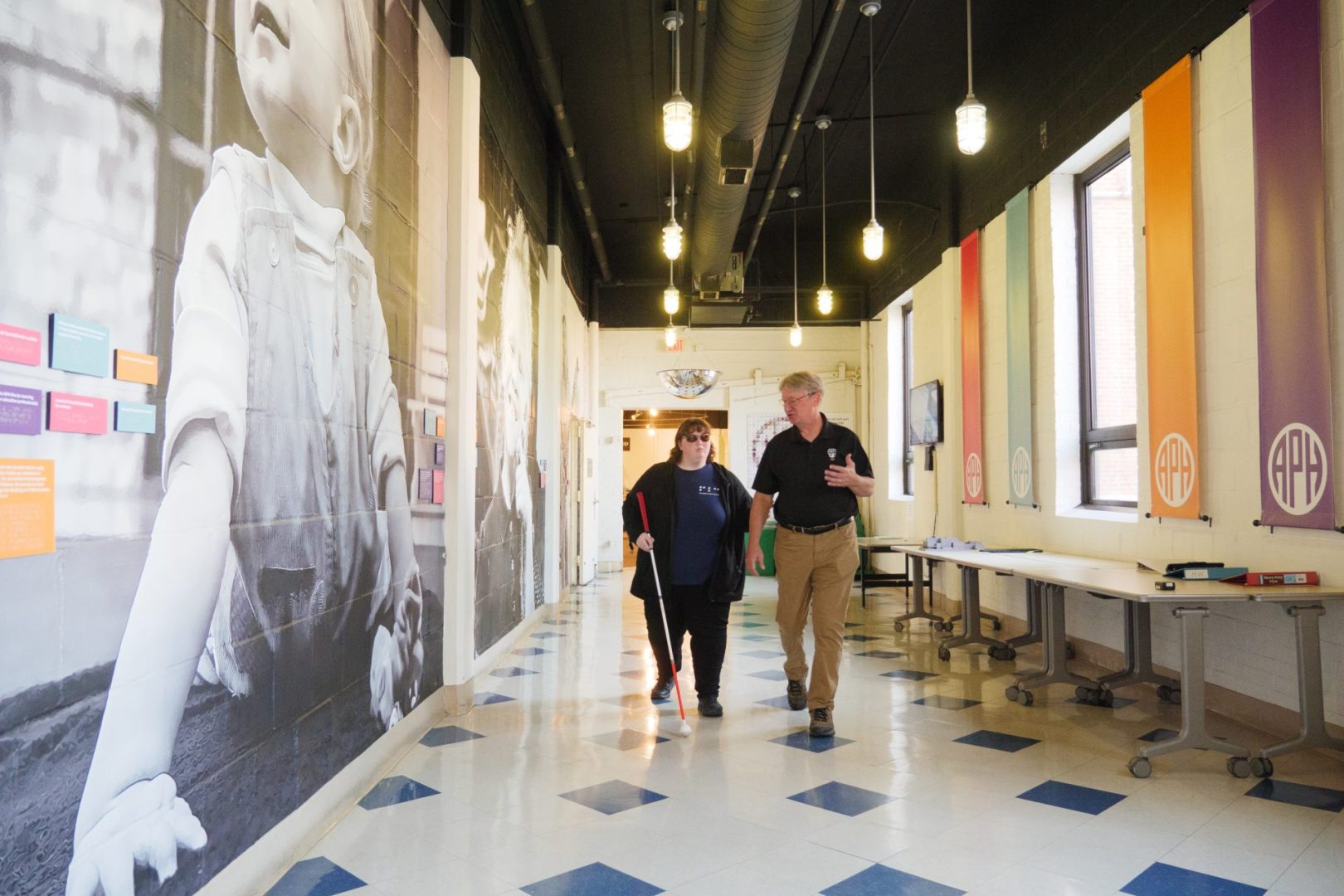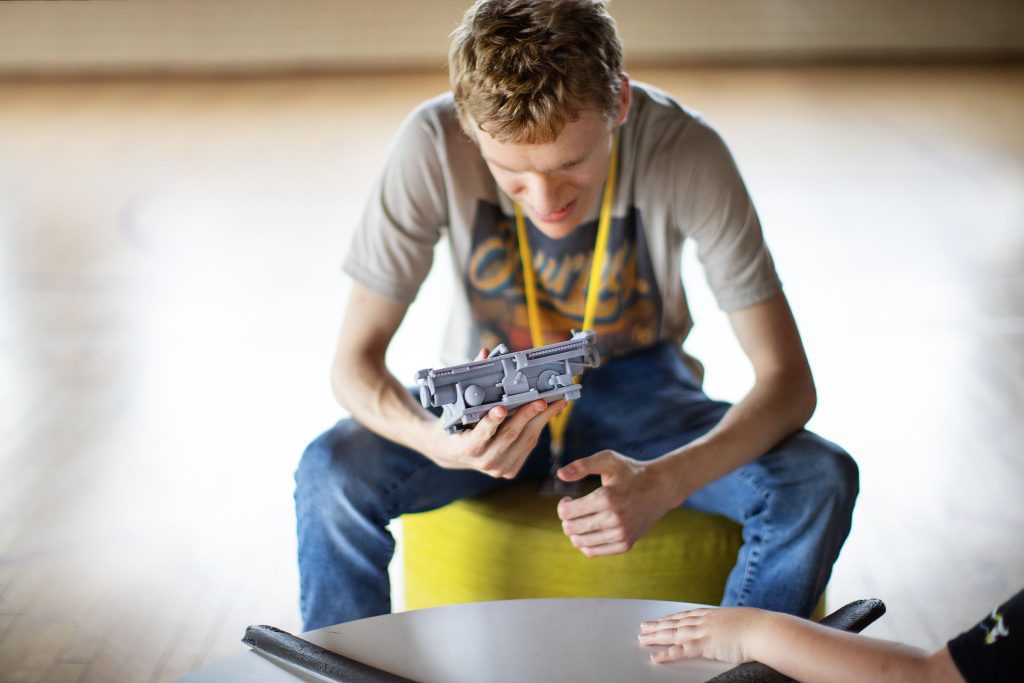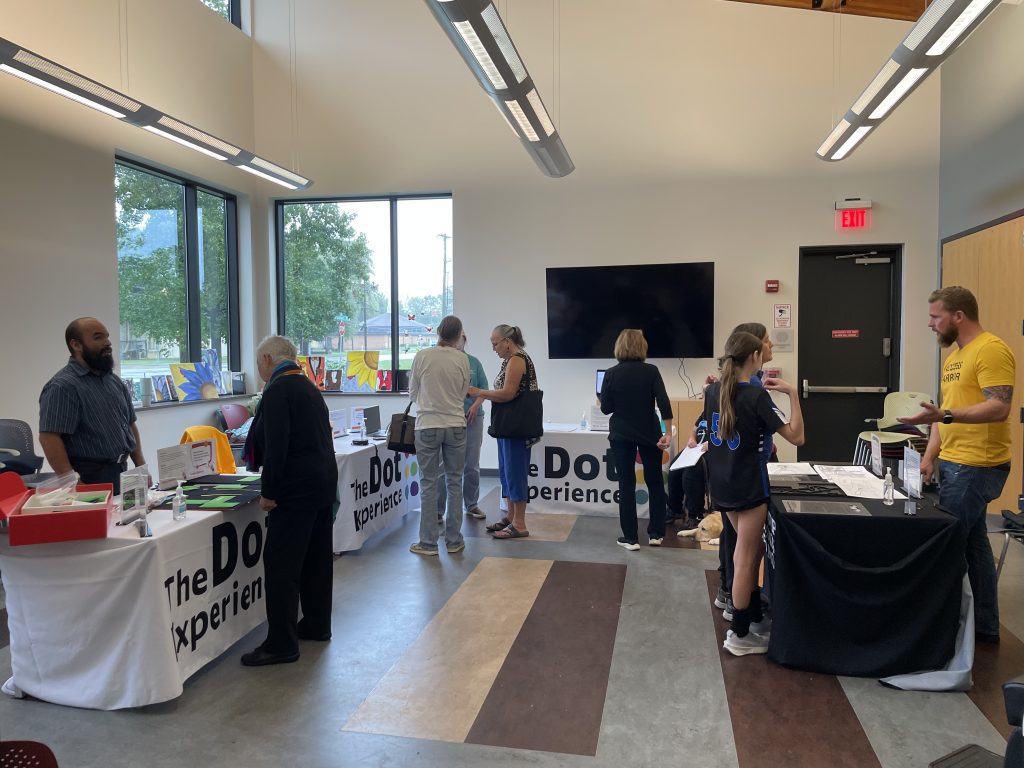To ensure gift delivery by 12/25, please place orders via UPS shipping no later than 12/17.
CloseDecember Reflections and Transitions

Late December is always a great time for reflection. There have been a lot of big changes in the museum at APH in 2023. On June 2, we closed the Museum of the American Printing House for the Blind. We’ve been posting about that all summer and fall as Mary Beth Williams, Justin Gardner, and I deinstall the exhibits and moved everything into storage. We were glad to be able to bring many old friends back to the museum on May 22nd to celebrate what we have been and what we are becoming. It was great to see founding director Carol Tobe; my first boss, Gary Mudd; the company president when the museum opened in 1994, Tuck Tinsley; and so many other friends of APH and the Museum.
And later that day we gathered for a groundbreaking ceremony on the front lawn. Company President Craig Meador stood with Board Chair Phoebe Wood and the Commonwealth’s First Lady, Britainy Beshear, and announced The Dot Experience at APH. The Dot Experience will explore blindness and innovation through the shared experiences of a diverse cast of people from all over our country. We’ll bust myths and stereotypes and work to change the public’s attitudes about disability. We’ll have a major exhibit on Helen Keller and her teacher, Annie Sullivan, and finally be able to accomplish Helen’s dream that her personal possessions be exhibited in a museum.
Over the summer, everyone began moving, gradually at first but then in a flood, from their offices at the front of APH into temporary spaces. As I write this, our museum team is one of the last still in our original offices, but everything is in boxes, and my desk and the refrigerator and our cabinets are empty. I am just waiting for the phone call.
A couple of weeks ago, the guys with the chainsaws and the jack hammers and the dump trucks arrived to start laying the foundation for the new building. In a few more weeks, crews will begin removing the exterior walls and interior fittings from the 1955 and 1970 buildings. The buildings will be stripped down to their bare bones and then we’ll begin again, rebuilding everything to create a harmonious whole facing Frankfort Avenue.
That’s a lot of change for a staff to handle, but we’re still talking to each other. There’s just too much to do to waste time mourning the passing of the old. And there’s one more big change to come. My role at APH is changing too. For the last eighteen years, I have been the Museum Director here at APH. It has been one of the great honors of my life that this amazing community has allowed me to wander through their attics and storerooms, learn and tell their stories, and share their lives. I arrived in August 2005 with one strategy: tell this community how special it was until everyone saw what I saw.
I have been privileged to be welcomed by so many special people and be privy to so many special moments. I have a lot to be thankful for. We’ve built the museum collection at APH into what one important disability historian, Mara Mills, called the largest disability history collection in the world. Not the largest blindness collection—the largest disability history collection anywhere. We were able to accomplish this because teachers, students, institutions, and many Blind (capital “B” identity-first) people trusted us with their precious memories, photographs, books, papers, and artifacts.
And that trust gave the American Printing House for the Blind the courage to try something new. To aspire to create the most accessible museum experience for people of all abilities ever attempted is both “crazy talk” and pure truth. To accomplish this big, hairy, audacious goal, we have assembled a village of Blind advisors and decision makers, exhibit designers, accessibility experts, architects and passionate APH staff all working under the direction of Jo Haas, the previous CEO at Kentucky Science Center, as project manager. At the end of 2023, I will be transitioning out of leadership to a role that will allow me to support The Dot Experience more fully in a storytelling, research, resource management, and writing role. I will be on the road less, which I’m looking forward to. 2023 has been crazy and amazing. But just wait and see what we are going to do in 2024!
Share this article.
Related articles

Solid Light’s Prototyping Team Revolutionizes Museum Accessibility
APH’s upcoming accessible and interactive museum, The Dot Experience, has been a labor of love from so many in the...

Solid Light Sets the Stage for Inclusivity
A lot goes into designing a brand-new museum. From exhibit planning, to selecting flooring, and beyond, our partners at Solid...

Orientation, Mobility, and Innovation: Connect the Dots to The Dot Experience
In our fast-paced world, everyone needs the ability to move freely and confidently. At APH, we’re dedicated to ensuring that...
